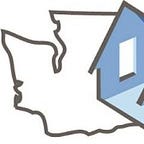Heating with Electric Baseboards? You Might Want to Reconsider
Bruce Davis, Sr. | Day & Nite Plumbing & Heating | RHAWA Vendor Member
According to the last census, about 50% of all the homes in the U.S. heat with natural gas. The next most common source of heating in about 35% of all U.S. homes is some sort of electric heat. Resistance baseboard electric heat is a very common choice for people who need to build cheaply or add heat to a newly remodeled room because the upfront cost of the electric baseboard units is so cheap compared to other heating systems.
However, the U.S. Department of Energy says that resistance baseboard heat actually turns out to be one of the most expensive ways to heat your home — both financially and in what we have to sacrifice and live with — for many different reasons. One reason is that most of the U.S. makes electricity with coal or oil. Unless you live in an area with relatively inexpensive energy, producing electricity is neither cheap nor efficient. Since about 42% of every home’s energy bill goes to heating, the expense of electric heating quickly adds up. Another reason is that electric baseboard heating units are typically placed on exterior walls and under windows. Heating an exterior wall demands more energy because the heater is always up against the cold outdoors, and heat is lost regardless of the insulation. It would be nice to be able to put the baseboard heaters on an interior wall, but if that were done, every room would feel even more drafts.
That is because when it comes to insulation value, windows have very little and actually act like a cold air waterfall. The cold glass cools the warmer room’s air next to the glass, and that cold air then drops across the floor. If there is a baseboard heater under the window, it will stop the cold air somewhat when heating, but not well. When the baseboard heater is off, the cold air on the window or sliding glass door is pouring cold air.
Even though the actual air temperature may be 70 or 71 degrees F, my wife feels like the room is about 68 degrees, and the heater gets bumped up just a tiny bit more. Curtains and carpets often hamper electric baseboard heaters too. That new, thick, and warm-looking carpet was shoved under the baseboard heater, which cut off the convection air circulation.
There needs to be a ¾” minimum air clearance under the baseboard or the air will not circulate, nor be drawn up through the heating unit and heat the room. Thick curtains do help keep the warm air off the cold window, but if there is an electric baseboard heater underneath, the curtain must stop 4” to 8” above the tip of the heater. If the curtain hangs in front of the heater, it must hang a minimum of 3” away from the front of the unit. Then of course, there is dust. Since electric baseboard units circulate heated air by convection, it is a gentle airflow. Cobwebs and dust that collect on the metal fins can restrict heating by more than 80%.
It is imperative that the front of the electric baseboard units be vacuumed thoroughly to remove all the collected dust, cobwebs, etc. at least annually. If you have a pet, the baseboards might need to be cleaned two or three times a year to keep them working reasonably well. The best choice for all electric heating/ cooling in my opinion is a heat pump system, and if you are upgrading from baseboard electric, you can use a ductless heat pump system. Conventional, good quality systems can find heating when outside temperatures are quite cold. There is an old saying about investing in important systems that we need and use in our homes year after year: “Pay once, cry once.” We get what we pay for, and I think it is best to just bite the bullet and go with something you can enjoy and appreciate living with that is economical and environmentally friendly.
Bruce Davis, Sr. is President of Day & Nite Plumbing & Heating, a 61-year old family owned and operated plumbing and heating business in Lynnwood, Washington. Bruce can be contacted
at bruce@dayandnite.net. Visit their website at dayandnite.net or call (800) 972–7000.
See current report at energy.gov/energysaver/home-heating-systems
For more information about RHAWA please visit: RHAWA.org
